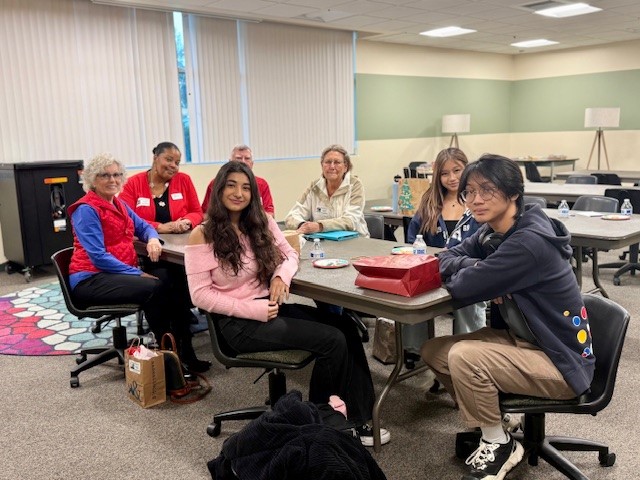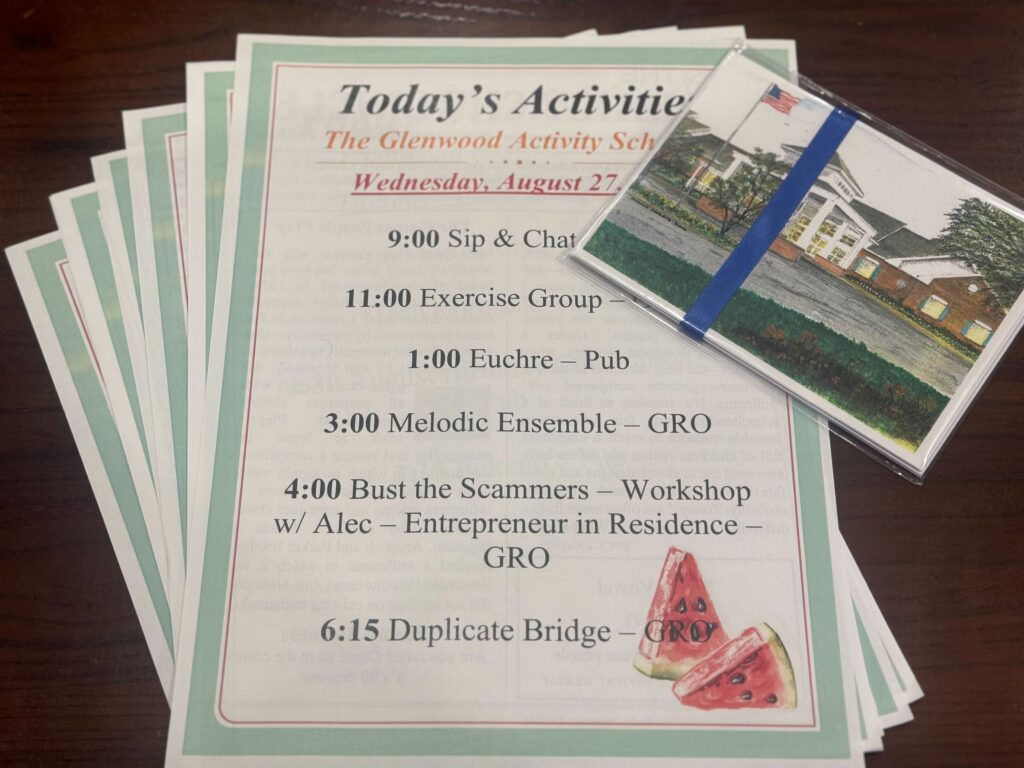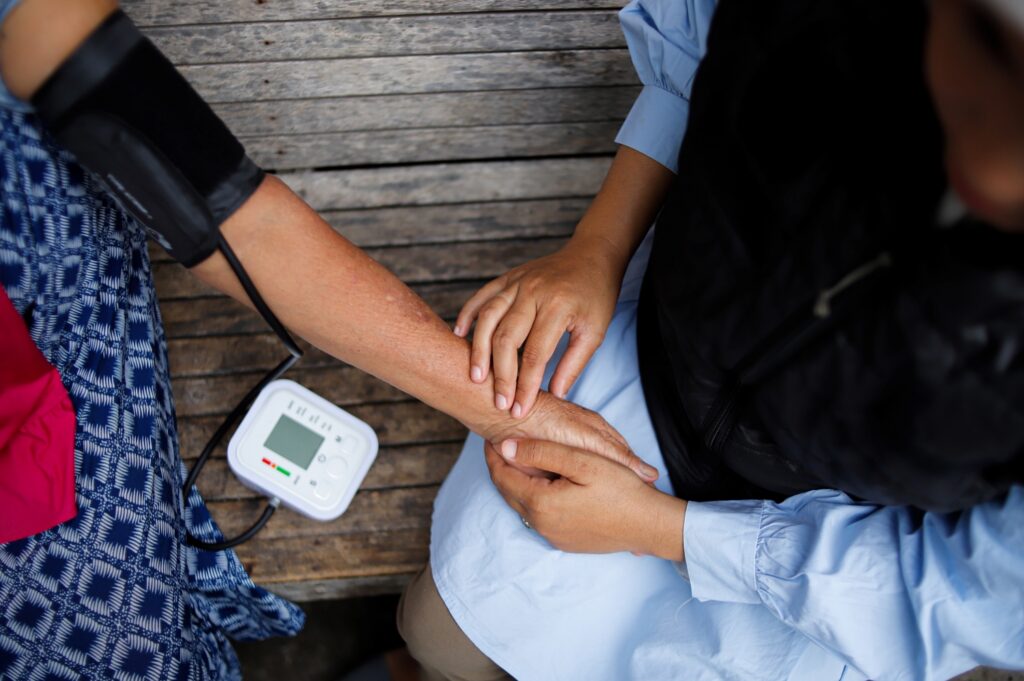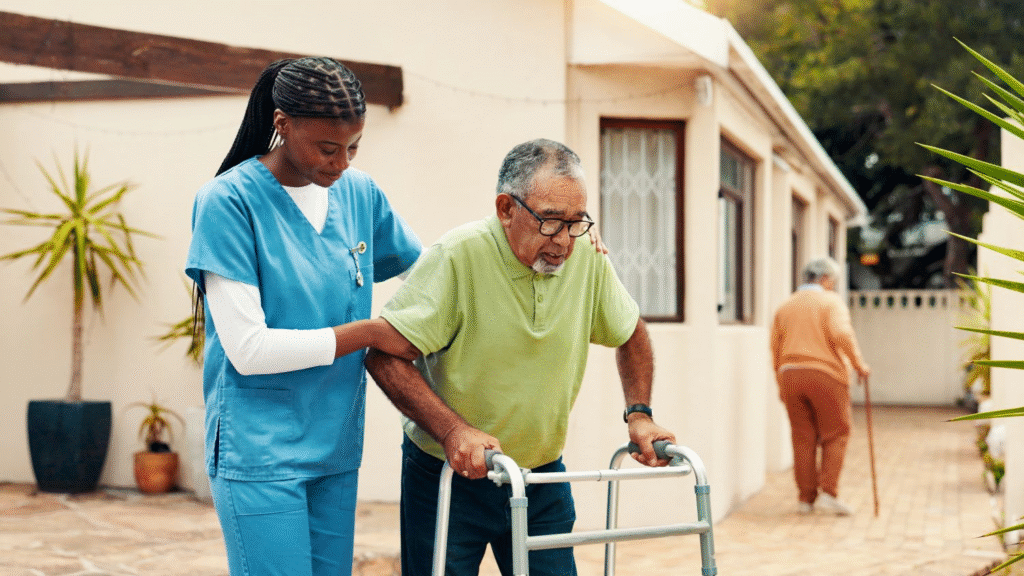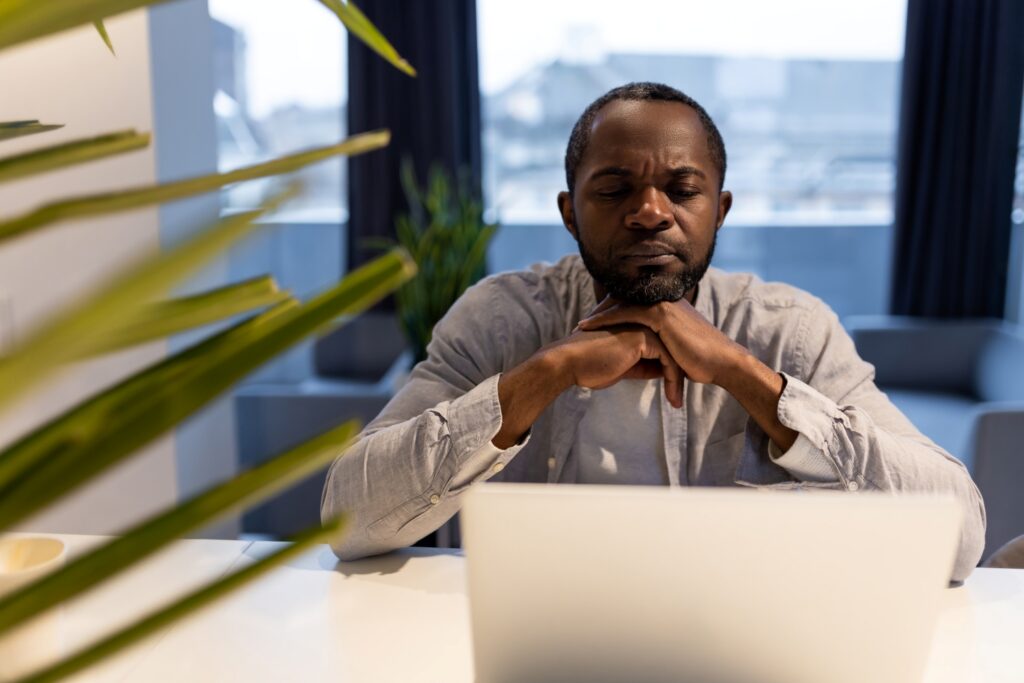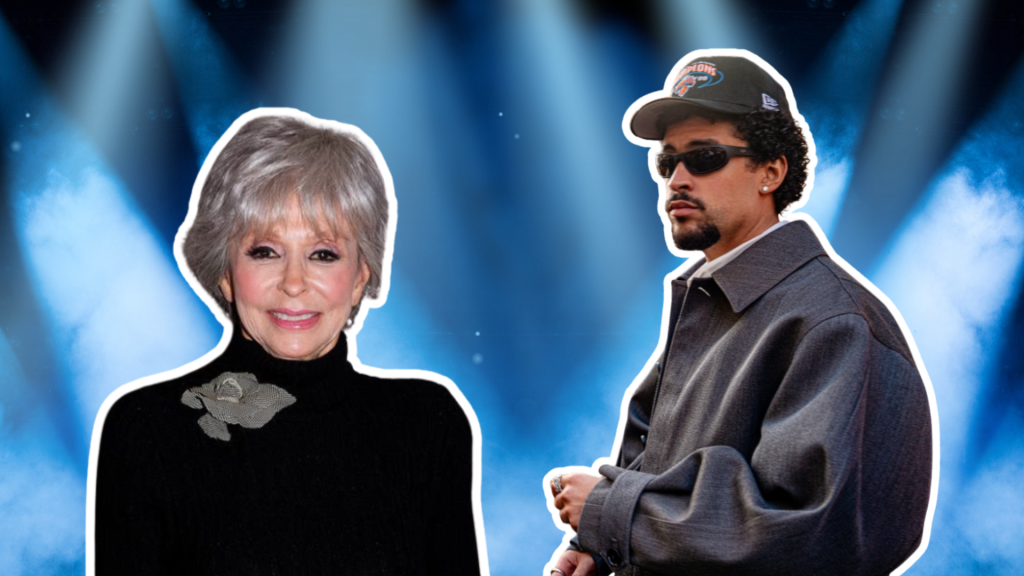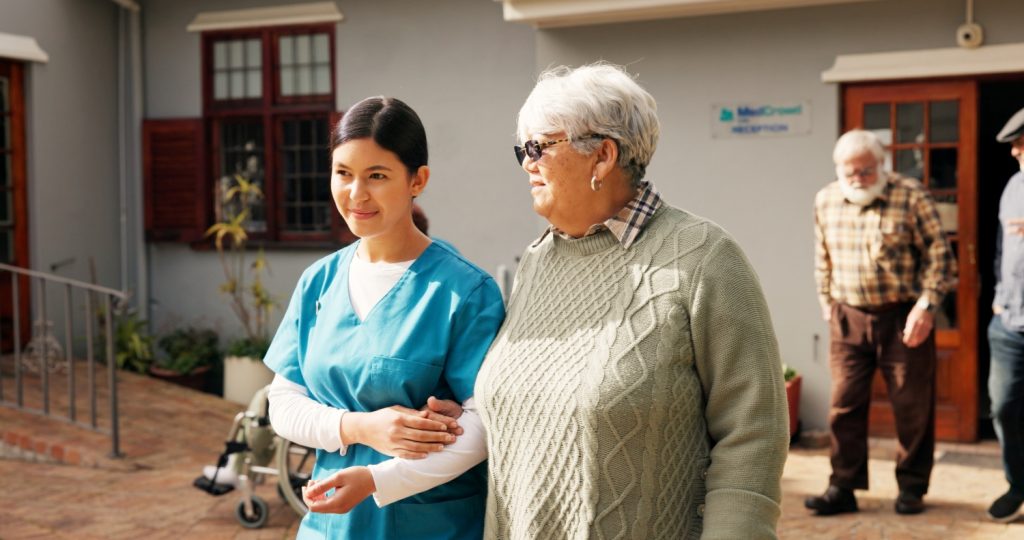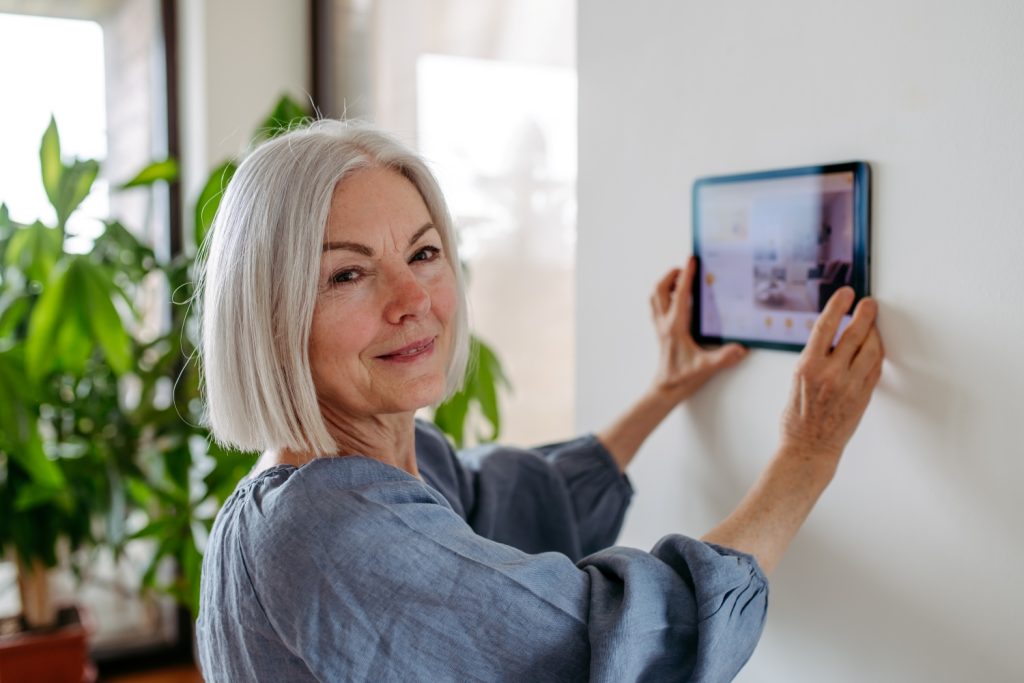Editor’s Note: The John A. Hartford Foundation is collaborating with ASA to advance equity in aging by supporting ASA RISE, a 20-week social justice and leadership program for rising leaders of color in aging, and via the development and dissemination of equity-related, partnership-based thought leadership through ASA’s Generations platform. This blog post is part of that series.
When I moved from South Carolina to California during the pandemic, I wasn’t just chasing a long-held dream of living near the Pacific Ocean—I was searching for something deeper. With my son, Corey, starting college, I finally had space to ask: What’s next? Who am I becoming?
For more than a decade, I had worked in adult education—uplifting older learners, advocating for equity, and building inclusive programs where people felt seen and valued. But something was missing. I wanted to do more than manage programs; I wanted to lead with purpose. To build something that reflected my belief that inclusion doesn’t stop at race, gender, or class—it extends across generations, too.
That desire led me to San Diego Oasis, a nonprofit focused on healthy aging through lifelong learning and community engagement. I arrived with experience and a deep respect for older adults, shaped by years of working alongside them. But Oasis opened my eyes to a reality I hadn’t fully yet grasped: how rarely generations truly engage in meaningful, reciprocal ways.
According to Generations United, 53% of older Americans say they seldom interact with people outside their age group—even though many want to. That statistic lingered. It felt like a missed opportunity—and it ignited something I couldn’t ignore.
As the Intergenerational Tutor Program Manager at San Diego Oasis, I’ve witnessed the “magic” that happens when older adults and young students come together. Week after week, I saw trust, confidence, and curiosity begin to grow. Those moments stayed with me and eventually became the foundation for a new idea: a dual-mentorship model built on intergenerational exchange.
A New Kind of Mentorship
My ASA RISE peers Kim Nguyen, Dan Stewart, and I called it Rising Currents—a nod to our ASA RISE fellowship and inspired by the dynamic exchange of energy, knowledge, and perspective that flows between generations. Together, we envisioned a program rooted in a simple but powerful idea: that both older adults and teens are often underestimated. But when you bring them together with intention, something remarkable unfolds.
At its core, the program is about reciprocal growth. High school students and older adults meet one-on-one to explore and eventually master practical tech skills, ranging from understanding the cloud to more advanced use of apps and social media. In return, older adults offer life insights: guidance on communication, career paths, and resilience.
But it’s not just about skills—it’s also about recognizing the value of lived experience at every age. Through these interactions, assumptions fade. Empathy grows. And real bonds begin to form.
The Pilot: Small Moments, Big Impact
Developed from our cohort’s capstone project theme of “Intergenerational Allyship,” we envisioned a model that would foster authentic conversations across age groups. We launched the pilot in October 2024 in partnership with Poway High School in San Diego County, CA, and San Diego Oasis. Three pairs of students and older adults met weekly for 40-minute sessions over 5 weeks—a condensed version of our original 12-week plan, but still deeply impactful.
Each pair found its own rhythm. Steve and Lewis discussed careers and workplace expectations. Hillary and Camille explored college paths and community involvement. Chris and Jaretzy swapped podcast recommendations and laughed about social media (Chris is not a TikTok fan). These weren’t just conversations—they were moments of joint discovery.
‘People think older adults just don’t understand technology, but that’s not it—we just don’t use it every day like teens do. Once I get it, I get it …’
I’ll admit, I had doubts early on. Would the generational gap feel awkward? Would conversations stall? I was pleasantly surprised as those concerns quickly faded.
“People think older adults just don’t understand technology, but that’s not it—we just don’t use it every day like teens do. Once I get it, I get it … it just takes a little longer sometimes,” said Steve, a program participant.
Naturally, we faced challenges. Without access to students’ personal contact information, follow-up between sessions was limited. And with just 40 minutes a week, there wasn’t much time to build a deeper familiarity. But even within those constraints, a genuine connection emerged.
One moment I’ll always remember happened during our final session—a small holiday/goodbye party with snacks, casual conversation and small gifts I’d brought to thank everyone. We were gathered around one big table, enjoying one another’s company, when someone suggested a group selfie. Figuring out how to angle one phone to fit seven people became its own fun challenge—full of shoulder-squeezing, playful commentary, and a little trial and error. But the photo we finally snapped wasn’t just a picture. It captured the warmth, ease, and camaraderie that had evolved between us. I still smile when I think about that day.
What’s Next for Rising Currents
Presenting the pilot at the ASA On Aging Conference in Orlando was a turning point. Kim, Dan, and I received insightful feedback—including a suggestion to try the next phase with college students, who might have more flexibility and autonomy.
That idea resonated; so much so that I’m now leading efforts to expand Rising Currents into new communities. I’m in active conversations with San Diego State University to launch a second-phase pilot in Fall 2025. The goal is to preserve the program’s personal feel, while strengthening its structure and reach.
Our post-pilot survey revealed encouraging results: teens were engaged, older adults gained confidence with technology, and conversations prompted honest reflection on ageism. Teens earned service hours and letters of recommendation. But most importantly, participants left with a renewed sense of connection and mutual respect.
A Personal Reflection
For me, Rising Currents isn’t just a program—it’s proof of what’s possible when we create intentional space for people of different ages to grow alongside one another. We challenge assumptions. We foster empathy. We rediscover the power of simply being present.
That belief runs deep in my career journey. As a member of ASA RISE Cohort 3—The Catalysts—I’ve stepped more fully into leadership. I’ve learned to use my voice with clarity and purpose. And I’ve found a community where I belong. Being surrounded by other BIPOC leaders in aging has been deeply affirming. I found my people.
From day one of our ASA RISE fellowship, our dedicated and inspiring leaders—Patrice, Cynthia and Victoria—asked us to reflect on our “why.” To this day, mine has never wavered: to build strong relationships with older adults by fostering belonging and advocating for the equity, inclusion and respect they deserve. Over time, I’ve discovered that intergenerational programming is not just part of that mission—it’s where my passion lives.
The Bigger Picture
Rising Currents isn’t just about learning how to navigate a smartphone or fine-tuning a résumé—it’s about rebalancing who gets to lead, who gets to learn, and who gets to feel empowered in the process. It’s a reflection of my commitment to creating spaces where people of all ages are valued, visible and validated.
This pilot reminded me of something I’ve long believed: older adults are not just a population to be served, but a vital force to be included. And when we bring people together across generations with intention and respect, something substantial begins to take shape—a shared momentum that lifts everyone involved. That’s when the current truly begins to RISE.
Michelle Irby is the Intergenerational Tutor Program Manager at San Diego Oasis.
Photo caption: Rising Currents farewell party. Irby is at the end of the table in a red jacket.
Photo credit: Courtesy Michelle Irby.

